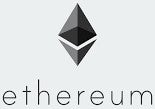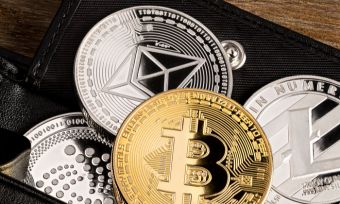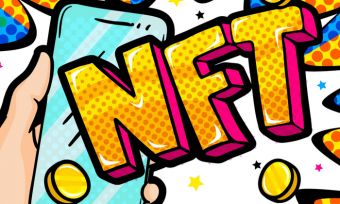What are altcoins?
Altcoin is a catch-all term that refers to any cryptocurrency that isn’t Bitcoin. Ethereum is the largest of the altcoins, boasting a market cap that has topped US$500 billion. But there are almost 15,000 other cryptocurrencies of varying size, purpose and legitimacy that also fall under the altcoin banner.
Altcoins have many different uses. But the one thing they all have in common is that they’re built on a blockchain. The same technology underpinning Bitcoin. But whereas Bitcoin is basically an analogue for money, altcoins have been designed for all sorts of purposes. From decentralised apps to fan tokens. To travel booking systems, web browsers, peer-to-peer loans and video games. As well as marketplaces for art, music, computing power and everything in between.
But while altcoins can make for compelling and profitable investments, the lack of regulatory safeguards and accepted performance metrics for cryptocurrencies means that they’re also far riskier than investing in the stock market. Especially when it comes to newer coins.
→Related article: How To Buy Cryptocurrency in New Zealand
Major types of altcoin
While there are thousands of altcoins with hundreds of use cases, you can classify most of them under a few major headings.
 Smart contract platforms
Smart contract platforms
Led by Ethereum, smart contract platforms (also known as Layer 1 platforms) are blockchains that allow you to create and run decentralised apps (dApps). For these platforms, the altcoin is typically a token that you pay in order to use the platform. For example, you use ETH to pay for transactions on the Ethereum network, and SOL to pay for transactions on the Solana network.
Notable examples: Ethereum, Solana, Algorand, Avalanche
Stablecoins
Stablecoins are blockchain-based versions of real world currencies, most commonly the United States dollar. They are designed so that at all times they hold the same value as the currency they represent. While not particularly interesting from an investing standpoint, they are the most commonly used cryptocurrencies in the world because they facilitate trading in other altcoins.
Notable examples: Tether, USDC, Binance USD
Money alternatives
As the biggest player in the cryptocurrency space, Bitcoin has spawned a lot of imitators. Most fulfil the same purpose – a decentralised way of exchanging value. But with certain improvements. Faster transactions, cheaper fees, more privacy or some combination of the above.
Notable examples: Litecoin, Bitcoin Cash, Monero

Memecoins
Memecoins are the true mad fringe of the cryptocurrency space. Essentially useless and/or straight-up jokes, some of these coins nonetheless command eye-watering valuations because in crypto a successful meme is one that people pay for.
Notable examples: Dogecoin, Shiba Inu coin, Flokicoin
Utility tokens
Utility tokens are, as the name suggests, tokens that have a direct use within a given blockchain network. They could be used to pay for transaction fees on the network or create NFTs (non-fungible tokens) or provide liquidity to DeFi (decentralised finance) lending/trading platforms or give holders voting rights on changes to the protocol.
Notable examples: Filecoin, AAVE, Enjin
 Metaverse tokens
Metaverse tokens
Metaverse tokens are an emerging category of blockchains that are used to run in-world economies in blockchain-based games. For example, in the game Axie Infinity players earn AXS tokens. They can use these to take part in the game’s marketplace, as well as vote on changes to the game world and mechanics.
Notable examples: Axie Infinity, Sandbox, Decentraland
Where to buy Crypto in NZ
The display order does not reflect any ranking or rating by Canstar. The table does not include all providers in the market.
| Provider | Fiat Currencies | Bitcoin | Other Currencies | Est. |
| Easy Crypto | NZD, AUD | Yes | 100+ | 2018 |
| Independent Reserve | NZD, AUD, USA | Yes | 24 | 2013 |
| Kiwi Coin | NZD | Yes | No | 2014 |
| Swyftx | NZD, AUD | Yes | 228 | 2017 |
This information is not an endorsement by Canstar of cryptocurrency or any specific provider. Canstar is providing factual information supplied by providers. Cryptocurrencies are speculative, complex and involve significant risks. Canstar is not providing a recommendation for your individual circumstances or in relation to any particular product or provider.
Are altcoins a good investment?
Bitcoin is famed for its wild price movements, but the volatility of many altcoins puts Bitcoin to shame. While it’s not uncommon for altcoins to skyrocket, it’s also not uncommon for the same coins to lose 95% of their value. Even on shorter time frames, seeing a coin double or halve in price in a single day is a regular occurrence.
So, investing in altcoins is not for the faint-hearted. A well-known adage in crypto circles is “don’t invest more than you can afford to lose” and it’s worth taking to heart. Scams are rife, projects fail and disappear and there’s nothing to protect you if things go south.
However, not all altcoins are born equal. Investing in Ethereum is a very different proposition to investing in a memecoin with a market cap of a few hundred thousand dollars.
Assessing how risky an investment is can also help you decide how much to invest and what sort of investment timeframe to look at. When it comes to altcoins the answer to the latter can be anywhere from a decade to a couple of days. So be sure to set out your goals and timelines before you take the plunge.
As with all investments, the onus is on the investor to build their own investment thesis by asking who, what, why and how:
- What does the project do?
- Who’s behind it?
- Why might it be successful?
- How could that lead to an increase in value?
→Related article: The Altcoins You Should Know About
Where to next for altcoins?
Right now, new altcoins are being created faster than anyone can practically keep track of. Thanks to the rise of decentralised exchanges (DEXs) like Uniswap, the barriers to creating a tradeable altcoin are essentially zero.
However, this isn’t a sustainable state of affairs. Much like the dotcom bubble of the late 1990s, excitement, hype and rampant speculation are fuelling the altcoin sector. Companies with little more than a roadmap and a website are commanding valuations in the hundreds of millions. It’s becoming hard to distinguish projects with real-world utility and user bases from empty shells.
What history tells us
If history is any guide, at some point there will be a widespread collapse in altcoin prices along with an extended period of consolidation. During which time the market weeds out the successful projects from the empty shells, copycats, scams and also-rans.
How do we know? Because it’s happened to crypto before. In the second half of 2017, the ICO craze saw hundreds of new blockchains launch with the aid of tens of billions worth of retail investors’ funds. When the market collapsed in early 2018, most of the projects disappeared or went under. Sending the coins involved to zero.
While this may sound pessimistic, in the long run it’s a good thing for the altcoin scene. Stronger projects will survive and buy time to execute on their promise.
Ethereum is a case in point. It crested at US$1400 a coin in early 2018 before losing almost 95% of its value over the next two years. Cut to 2021 and Ethereum is the foundation of the DeFi and NFT scene, along with hundreds of other major blockchain projects. In November, the price of Ethereum crested at US$4800 and many think it still has room to grow.
The altcoin market is maturing and growing pains are only to be expected. But the crypto economy isn’t going anywhere. To be a successful altcoin investor you simply have to work out what the next big thing is going to be – and how long you’re willing to wait for it to get there.
Learn more about cryptocurrency here
 Luke Ryan
Luke Ryan
Head of Content, CoinJar
Luke Ryan is a Melbourne-based writer whose work has appeared in the Guardian, Saturday Paper, Executive Style, Quartz, Crikey and many more. He is currently Head of Content for cryptocurrency exchange CoinJar.
Enjoy reading this article?
You can like us on Facebook and get social, or sign up to receive more
news like this straight to your inbox.
By subscribing you agree to the Canstar Privacy Policy




Share this article